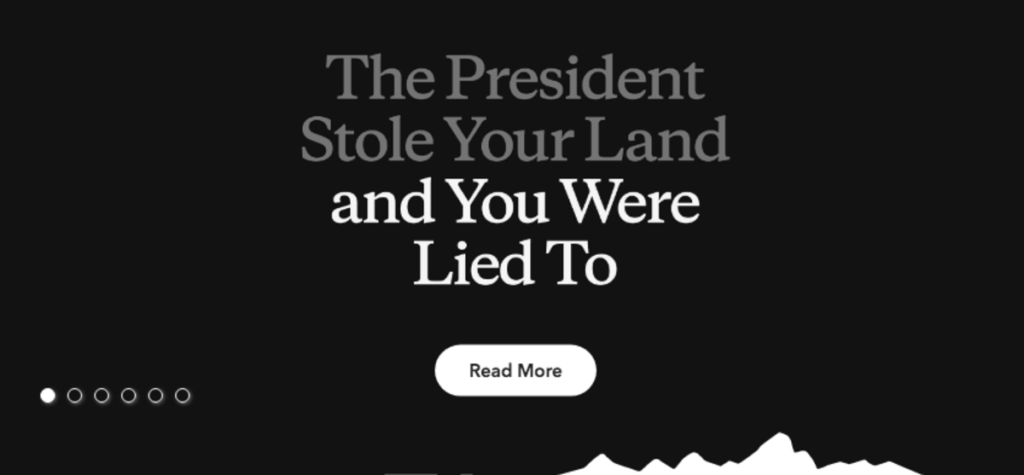Media Impact
Can We Believe The Gillette Ad?
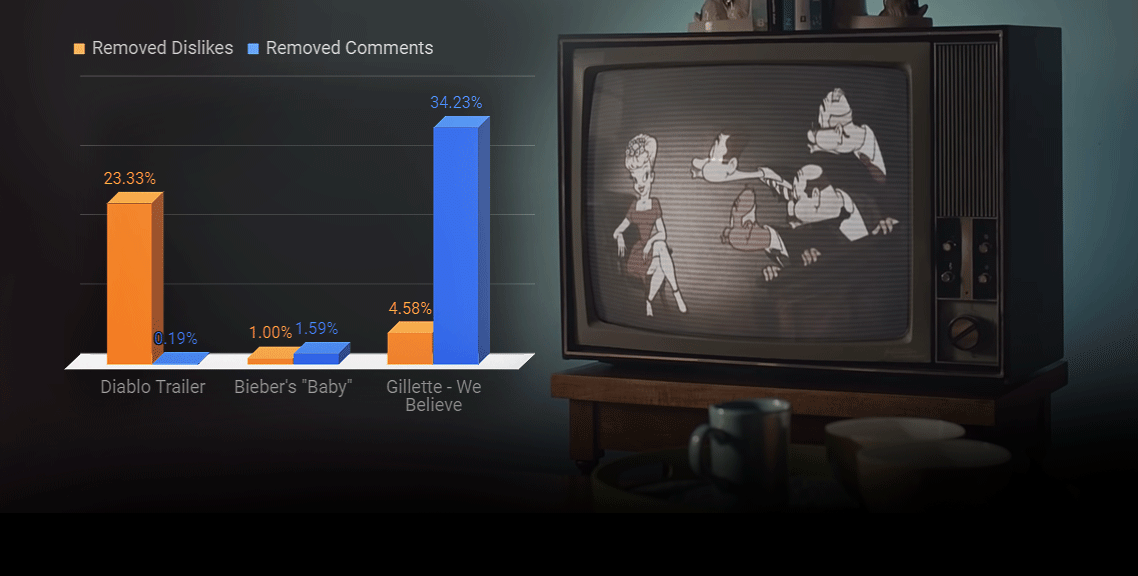
The new Gillette Ad. It’s Pepsi #2. It’s poorly executed, laden with half-hearted strategy, an elephant in the China shop of gender relations.
Numerically speaking, it’s not what it seems to be either. 34% of the ad’s comments were deleted, far more than other videos in similar dislike territories. Gillette’s account might just have set the YouTube proportional record for deleting comments on a single video (the absolute record goes to YT’s own Rewind 2018).
Taking Count – What Numbers Are Real on YouTube?
There have been repeated claims, mostly by YouTube commentators, that dislikes and comments were deleted. Another claim group was that the proportion of likes to dislikes seemed manipulated since it changed from a 10:1 ratio to a 2:1 ratio within days. Some outlets picked up the story, but nobody dove much deeper than a few screenshots. Well, after a few days and 3.000+ measurements we have answers for you.
With the help of YouTube’s API and Archive.fo’s screenshots of the video’s public numbers, we were able to test the claims of whether Gillette’s dislike and comment count were being subject to unusual moderator deletion.
Before we ask that though, it’s important to know how much moderation usually goes on in other controversial videos. If it’s common to delete a certain amount of comments/dislikes, then the criticism of Gillette isn’t directly fair – it’d just be part of the YouTube ecosystem. To get a litmus test of “how common is comment/dislike moderation in similarly controversial videos”, we used a few close neighbors in the List of most disliked YouTube videos as comparables and measured the front-end/back-end discrepancy.
One of them was a “Diablo” game trailer that also received criticism that the publisher had deleted comments and dislikes. Our research was simple – we made API queries to YouTube’s server back-end over the course of a few days while manually transcribing screenshots of the front-end from Archive.fo for similar time spans. While YouTube’s server keeps all video interactions on record, even fraudulent or bot-based ones, the public front-end is influenced by a filtering mechanism that hides certain interactions.
Claim 1: The Gillette Ad Had A Manipulated Growth Pattern
There was nothing really unusual about the growth pattern of likes and dislikes in the Gillette video while we were measuring it. But we started measuring server data on Day 3 of the video being public – the first 3 days we only know from public screenshots, and can project how the deletion pattern must have created a difference.
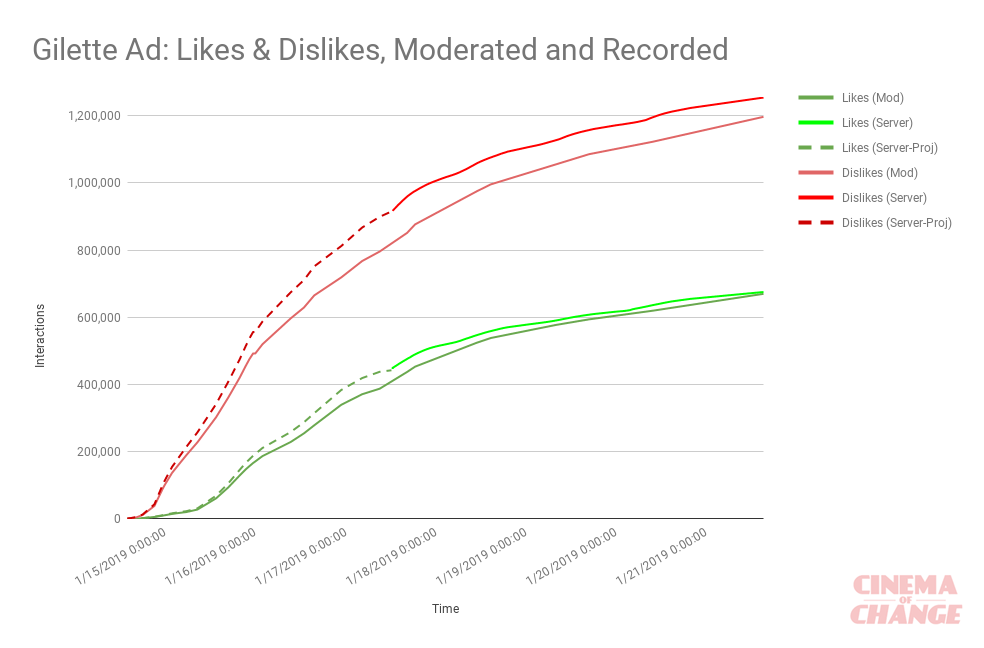
The growth and change of server-side as well as public facing likes and dislikes on the Gillette “We Believe” ad on YouTube.
You can see that in the beginning, dislikes took off very quickly, while likes had a slower growth, but eventually the growth rates approximately equalized, so now there’s a constant 500k lead on dislikes to likes. This is a simple explanation for the changing ratio from 10:1 to 2:1, and we have reason to believe there was no foul play at work there.
Interestingly enough, while there are more dislikes than likes that were hidden by moderators, the likes count disparity shrinks as time goes on, essentially un-hiding likes again. This might be a technical glitch, since a similar shrinkage of hidden dislikes seems to be going on as well.
The archival data only records public likes and dislikes, not comments – so we aren’t sure about the comment deletion pattern over time.
Like data? Take a look at the public spreadsheet.
Claim 2: A High Number of Dislikes and Comments Were Deleted
What was far more surprising to see was the comparison to other highly disliked videos. The server queries resulted in two real outliers – Diablo’s massive deletion of dislikes, and Gillette’s outstanding number of comment deletions. While Blizzard eradicated 220k dislikes on its Diablo Immortal trailer (that’s 23% of the total) from public view (Gillette only deleted 5%, slightly above average), Gillette deleted a whopping 34% of its comments – 172,000 comments to be precise. This is closely followed by YouTube’s own 2018 Rewind video, which has 21% of its comments removed and is the most-disliked video in YouTube history.
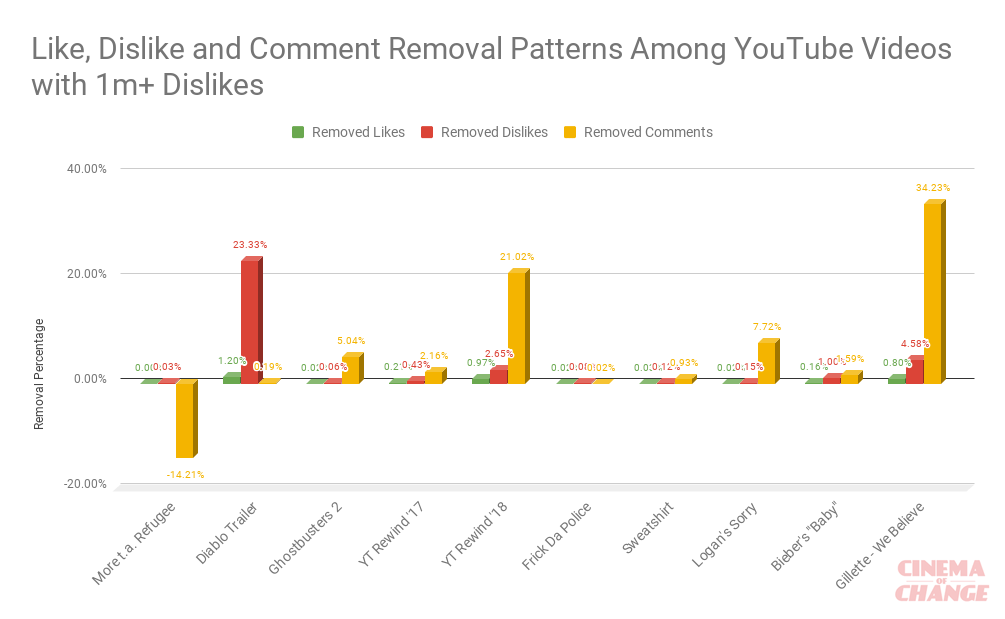
Gillette deleted a potentially historic fraction, 34%, of its comments on the “We Believe” video. Blizzard removed 220,000 dislikes on its worst received game trailer, and YouTube banned 21% of the comments on the latest Rewind video.
Here’s the underlying spreadsheet for that data.
There’s a reasonable argument that the comments on Gillette’s ad were so hateful that they had to be deleted, and the primary fuel to that fire would be the implicit attack on men in general, or the explicitly feminist message. The argument is solid when examining anti-feminist culture on YouTube; Feminist Frequency has their comments and likes disabled since the Gamergate controversy (also on server side), the most-watched pro-Feminist video is a TED Talk and has about 3,000/15% of comments deleted. Then again, semi-viral videos that would fit the “men will feel uncomfortable” category, like the Billie Bodyhair campaign or 10 hours of walking in NYC as a woman or #ustoo PSA, don’t have strong deletion patterns (approx. 1-2%).
If we want to know why Gillette proportionally deleted more comments than anyone else in that league, there’s only one way to know: For Gillette to give the public some insights in what their deletion policies looked like.
Note 1: “More than a Refugee” somehow has more comments publicly displayed than the server-side API query counted – I’m not sure how that’s even technologically possible.
Note 2: After talking with a number of large-channel YouTube managers, I was told that it was not possible to delete dislikes. Well – Blizzard’s 20% dislike deletion shows that YouTube makes exceptions.
Not Just Numbers – Let’s Talk Impact
After analyzing the numbers on YouTube engagements, the question to ask is: How did this happen? Why was the blowback so severe? Gillette was in a unique position to turn the gender relations conversation into a very engaging campaign that would have mobilized people positively. But they didn’t. Instead of focusing on progress, they focused on ambiguous, polarizing messaging.
In short, the “We Believe” ad was a waste of Gillette’s potential. And here is why.
I am all for purpose-driven marketing. I spend day and night thinking about and actually producing impact-driven content. And when that kind of advertising is done right by big agencies, it’s really quite incredible to watch positive impact unfold.
Well-Executed Campaigns as Primers
Take the Kaepernick ad by Nike. It asks people to dare to “dream crazy”, and took a political stance against the oppression of black people in the U.S by featuring Colin. That gamble played out well; the backlash was outweighed by support, and the market responded positively for a good run.
https://www.youtube.com/watch?v=Fq2CvmgoO7I
.
Or remember the Winter Olympics ad, “Proud Sponsor of Moms”? Guess who did that. P&G, parent company of Gillette. Everyone loved that. And in case you don’t watch much advertising, they did more of those, with bold themes and increasingly diverse casting.
P&G followed it up by tastefully celebrating black people’s identity and appearance with “Dear Black Man”:
.
Patagonia didn’t even use a video – they just turned their website dark and said “The President Stole Your Land” as a response to Trump’s threatened shrinkage of National Parks, and then sued him. The market liked it.
There are countless other examples of brands choosing more aware, purpose-driven marketing campaigns.
Watch at least a few of those above to get a primer of “what works”.
What all of them have in common is that they picked an impact area that was either agreeable to most their viewers, or close enough to their company ethos that controversy wouldn’t erode their loyal, primary customer base.
How Not to Do It: Gillette Ad & Pepsi Ad
Now compare this with the below:
Pepsi – “Jump In”:
https://www.youtube.com/watch?v=dA5Yq1DLSmQ
Gillette – “We Believe: The Best Men Can Be”:
https://www.youtube.com/watch?v=koPmuEyP3a0
.
Pepsi co-opted a social movement with a reality TV character and then preached unity when the world looked starkly divided. And even though some Pepsi drinkers might also watch the Kardashians, they saw through the half-hearted charade: Pepsi had nothing to do with activism, period. It was an “out of the blue” decision to capitalize on something happening in the world, and it felt fabricated.
Gillette did the same. Gillette has nothing to do with feminism, or with anti-bullying. Someone at Gillette decided to make this a cause out of the blue.
Gillette co-opted legitimate movements and issues like #metoo, but instead of sheepishly celebrating a soda version of a harsher reality like Pepsi did, it opened with s bad apples as representatives of its core base without delineation, and then sprinkled in a sugar coat of suggestions for all men on how to be better. Nothing new there, it’s just political now.
As a reality check, “toxic masculinity” is a pretty confusing nomer for negative aspects of masculinity. A Gillette ad for women opening with “Abusive women” wouldn’t work just like a US Army ad opening with “Un-patriotic Americans”. The conflation of two words creates ambiguity outside of an academic debate – is the adjective-noun pair describing the quality of the noun, or is it referring to a sub-part of the noun that matches the adjective? To further go into a grey zone, the “toxic” voice over is largely drowned out by “harassment” in the ad, resulting in a “sexual harrassment masculinity” sound upon first listen.
We’re not on a college campus dissecting word pairs here – we are in the world of impact-driven advertising to mass audiences, and you can’t afford ambiguity in this arena. Anyone that looks past these sloppy linguistic choices is providing Gillette a biased playing field.
.
The rest of the video is full of caricatures of bad men mixed with normal men, and an eventual return to “being the best”.
But by then, the base has tuned out, and Gillette has lost. Not only many of their customers, but an opportunity: To actually reshape and contribute to masculinity. To actually make an ad that men will watch, will love, will share, and will actually make them better men. An ad that all men can agree with, without reservations. An ad that doesn’t open with bad apples as representatives. An ad that encourages men to be present in their boys’ lives. A campaign against bullying.
Something that every man can stand behind, and a standard that we’re all proud to live up to. But that chance was wasted for something phony.

Gillette’s skin-tight ads in 2011 remind us of what the brand used to think about women – and how it appealed to similar sentiments it now criticizes, without acknowledging the hypocrisy.
Looking Inward and Forward to Do Better
Why do so few see the charade here?
Gillette could have acknowledged its treatment of women for the past 100 years and apologized, if they wanted to. Nobody really seems to see the irony in applauding to the feminism of the ad and Gillette’s unacknowledged past in contrast.
How about something as complicated as implicit biases by men (like what the boardroom scene tried to address)? Well, they could have done a boy’s version of their Always Ad #LikeAGirl (it’s a bit clunky but the idea is highly effective, and I’m sure it’d have worked with boys too).
All these topics take time and care to implement in separate campaigns. Gillette’s current ad is the impact equivalent of a “YouTube Rewind”, and is heading into similar mashup-dislike-count territory. There have been prior (Harry’s) and later (Egard) attempts to make “men’s issues” themed feel-good ads, but nothing comes close to the “primer” ads on the top, which had an impact edge to them.
A new Adweek Article suggests that the ad was primarily meant for women in the first place, to change their perception of shaving from “disgust” to “joy”. It’s a bit questionable to criticize men as a vehicle to position the brand better for women.
Doing ads that honestly criticize without alienating – that is hard. To Gillette’s credit, they at least failed at something challenging – and that is brave.
Non-Profit Tie-Ins Need Care, Not Just Cash
To finish on a slightly hopeful note – it’s wonderful that Gillette decided to donate $1M to the Boys & Girls Clubs of America. Awesome. But that’s all that Gillette had to say on their new thebestmencanbe.org website. No roll-out, no strategy, no content, no pipeline – just a promise of money and a single link to a great nonprofit. That’s the laziest impact follow-through effort I’ve seen in a long time. Sloppy ad, good nonprofit choice, obvious lack of involvement in the actual impact.
Gillette is a big company, and they can absorb a blow. 1.1M dislikes on YouTube isn’t even close to what Justin Bieber gets. But unlike Gillette, Bieber’s team left the negative comments rather untouched.
.
In the world of purpose-driven advertising, I like to hold companies, agencies and decision-makers to higher standards. Not a peer-pressured applause for intentions, but well-earned respect for nuanced execution and actual impact.
Because we all can be better.
And Gillette should be the best they can be.
Filmmakers
Out of the Basement: The Social Impact of ‘Parasite’

When Bong Joon-ho’s Parasite won multiple Oscars at this past weekend’s 92nd Academy Awards, the reaction was one of almost unanimous joy from the attendees and much of the American audience. Setting aside the remarkable achievement of a South Korean movie being the first to win Best Picture, this was due to the fact that so many people have been able to identify with Bong’s film, engaging in its central metaphor(s) in their own individual ways. Everyone from public school students to Chrissy Teigen have expressed their affection for the film on social media, proving that the movie has reached an impressively broad audience. The irony of these reactions is noting how each viewer sees themselves in the film without critique—those public school students find nothing wrong with the extreme lengths the movie’s poor family goes to, and wealthy celebrities praise the movie one minute while blithely discussing their personal excesses the next. Parasite is a film about class with a capital “C,” not a polemic but an honest and unflinching satire that targets everyone trapped within the bonds of capitalism.
Part of Parasite’s cleverness in its social commentary is how it depicts each class in such a way as to support the viewer’s inherent biases. If you’re in the middle-to-lower classes, you find the Kim’s crafty and charming, and echo their critiques of the Park’s obscene wealth and ignorance. If you’re a part of the upper class, you empathize with the Park’s juggling of responsibilities while indulging in their wealth, and have a natural suspicion toward (if not revulsion of) the poor. If you have a foot in both worlds, like housekeeper Moon-gwang and her husband Geun-sae, you can understand how the two of them wish to not upset the balance, so that they can secretly and quietly profit. All throughout Parasite, there’s a point of view to lock onto.
The point of the film is not to single out one of these groups as villainous, but to show how they’re part of a system that is the true source of evil. The movie has been criticized for lacking a person (or persons) to easily blame, which would of course be more comforting dramatically. Bong (along with co-writer Han Jin-won) instead makes the invisible systems of class and capitalism the true culprit, which is seen most prominently at the end of the film. All the characters are present at the same party, whether as hosts, guests, help, or uninvited crashers, and each class group suffers a mortal loss. It’s all part of the tension built throughout the movie coming to a head, yet there’s an inevitability to these deaths as well, a price each group inadvertently pays to keep the corrupt system they’re all a part of running. In this fashion, the movie is reminiscent of several works of dystopian fiction, such as Shirley Jackson’s “The Lottery,” and Aldous Huxley’s “Brave New World.” The film particularly recalls Ursula K. Le Guin’s short story “The Ones Who Walk Away from Omelas,” in which a utopian society is dependent on the continual torture and misery of a single child. Every system demands sacrifice, and Bong and Han make clear that that sacrifice is paid many times over.
The real twist of the knife in Parasite is the epilogue, which reveals that the real point of the class and capitalist systems is to keep as many people in their place as possible. The Park’s remain wealthy, and easily move away from their old house. The Kim’s remain in their same squalid hovel, with their patriarch now stuck in the basement hideaway of the Park’s old home. In “Omelas,” the tortured child is kept in a basement, as well, and where that story tells of individuals who reject that system and choose to leave it, Parasite shows that everyone has chosen to stay, with the erroneous belief that they can eventually change their place. The film’s intense relatability is likely the main reason for it being so beloved, yet it’s the messages it sneaks in that will hopefully be its most lasting social impact. All of us are still trapped within the system, but at least the secret of how it fails us and how it lies has managed to escape the basement. Let’s hope we can eventually escape, too.
Media Impact
“Crip Camp”: Unified Disability opens Sundance 2020
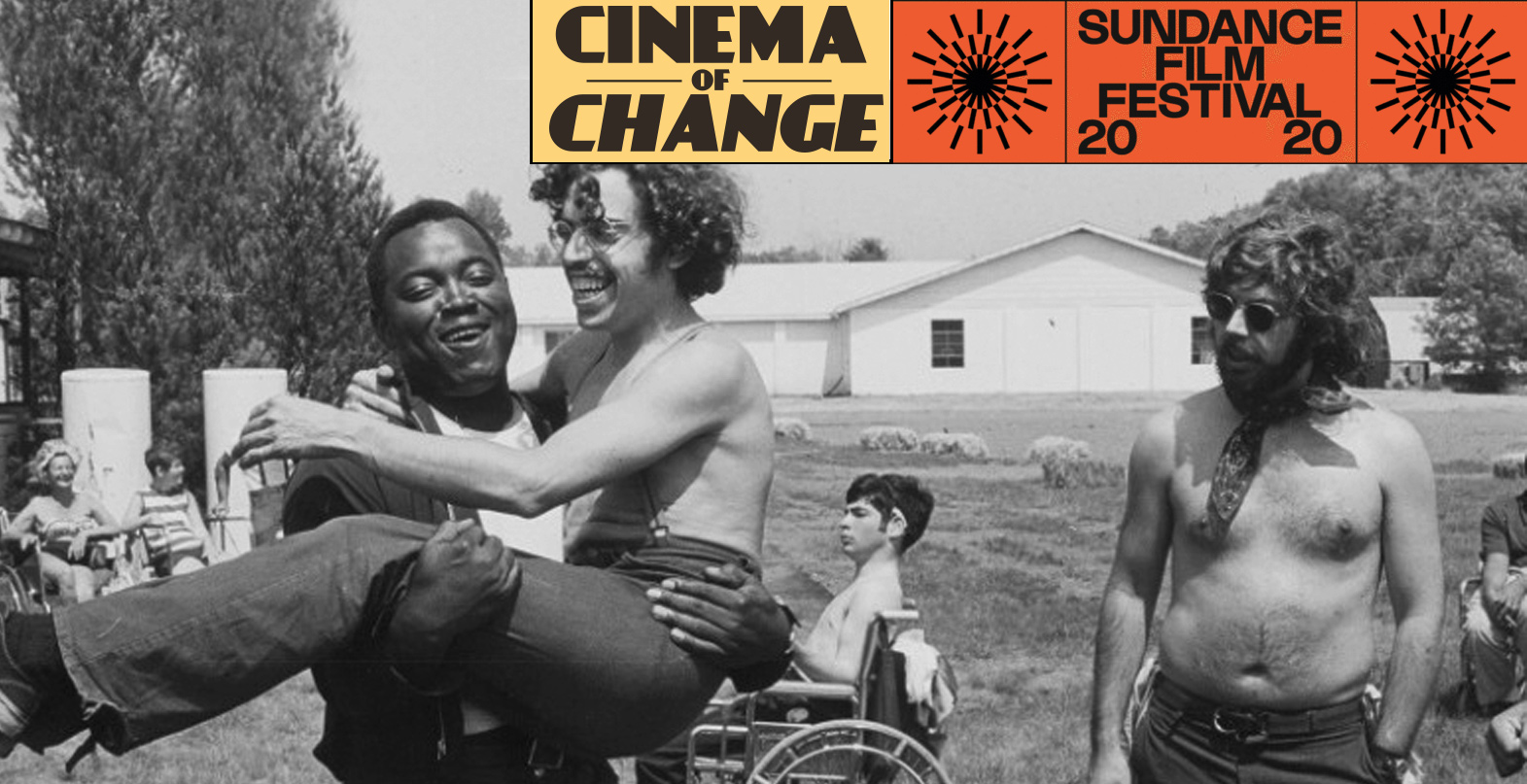
What happens when a bunch of teenagers go to summer camp in their height of puberty? The wreak havoc, have a great time, try some contraband drugs, and fool around with each other in a virginity-defying quest for adulthood. What happens if these teenagers have Polio, Cerebral Palsy, Down Syndrome, Spina Bifida or MS? The same thing. Just with a lot more wheelchairs involved in the baseball games and make-out sessions.
That’s the world “Crip Camp” introduces us to – for the first 40 minutes of the film, we are immersed in a wonderfully “inappropriate” summer camp Jened in upstate New York. This camp, founded by parents of kids with Cerebral Palsy, operated for nearly 20 years (approx. 1960-1980 with a second 25-year-run in another location until the early 2000s, which isn’t mentioned in the film) and provided an un-sheltered source of freedom for disabled teenagers, and an opportunity for human connection and growth to camp counselors from all over the United States.
Pity VS Profanity
Many films about disability utilize pathos, pity and pain. They are careful in the treatment of their characters and not to step on any toes – a bit like the THR review of the film. And while there is a lot of that in a disabled person’s life – and in many people’s lives regardless of ability – there’s plenty of joy, profanity and profound insights to be had in a film about disability. And, unlike the THR tip-toeing, it’s massively liberating how the film dealt with disability. Not as weakness or fragility, but as a simple fact of life. These are awesome people sharing hilarious and moving insights in what it’s like to be in their shoes.
I might be stepping on toes here, but in my experience with friends and acqinantes with disabilities, none of them want to be linguistically or physically babied or touched with white gloves. There are obvious physical needs that different disabilities come with, but I don’t think it’s productive to be all too sensitive around a person with a disability – it creates the same sort of “separate but equal” impression that sending them off to their own school does. And I think this true equality, making fun of each other and treating each other like we’re on the same level, leads to much more honest relationships.
One of my personal favorites of this level-headed approaches in the film was one of the camp alums recounting a story of his first date in the camp, along the lines: “A camp counselor taught me how to kiss the night before. That was the best physical therapy I’ve ever received. And then the next day, I had my first date with this girl at the camp. She touched my … cock. It was wonderful.” I’ve had similar conversations with quadruplegic friends in my personal life. Many disabled teenagers are perverts just like the rest of us.
These are simply not the things you’d expect if you’re an outsider – but they are the common thread that break assumptions and prejudice. When someone curses on screen, you know you can practically trust them, and there’s no need to put on a pity party. The use of humor is brilliantly applied in Crip Camp to remove barriers – whether it’s barriers between disabled groups, or barriers between the disabled world and the other 80-ish% of the population.
You might say, oh please, we all have disabled people in our lives, and things are much better now. Sure, most of us know a number of people with disabilities. They make up about 20% of the world’s population, practically forming the largest minority on the globe – and it’s hard to avoid getting to know 1 in 5 people. That doesn’t change anything about the fact that there’s still no true equity, and while a lot has happened since the Camp Jened era of the 1960s, 2020 is still full of employment discrimination and false assumptions. As long as you’re not personally affected by birth, disability is easy to ignore. Well, chances are that 1 in 4 of 20-year-olds will become disabled before retirement.
A line in the film profoundly illustrates this invisible divide. Jim LeBrecht, one of the two directors of the film (along Nicole Newnham) and himself having been born with Spina Bifida, recalls his father giving him advice when he was admitted to a public school: “You’ll have to introduce yourself to other kids. You have to approach them and say hello, because they will be afraid to talk to you.”
As filmmakers from all walks of life, the portrayal of people with disabilities on screen is a challenge – not so much in this film because it’s a film made by the community for the community. For those that don’t quite have good access or understanding of disability, RespectAbility’s “Hollywood Disability Toolkit” is a truly comprehensive 50-page guide to do things better. Unfortunately, the guide doesn’t directly recommend to make your disabled characters swear and talk about teenage sexuality – but that doesn’t change anything about the fact that these are powerful tools to disarm your audiences’ potential “fear of the other”. In the end, we’re all just people that can relate to each other’s human experience.
Record Occupations and Missing Footnotes
The film allows us to follow the teenage troublemakers of Camp Janed into their adult lives, where a number of them become political activists, deeply involved in pushing disability rights issues. Crip Camp focuses on one of the campers with Polio, Judy Heumann, who leads a street blockade in 1970s New York for disability rights and then graduates to West Coast activism, gaining continuous steam for the cause, up to the epic mid-point of the film, where hundreds of people with disabilities stage the “504 Sit-In” in the Health, Education and Welfare offices of the Federal Building in San Francisco. Joseph Califano, administrator of the HEW at the time, was unwilling to sign Section 504 of the Rehabilitation Act of 1973, which was supposed to ban publicly funded discrimination against people with disabilities. Judy and a number of other well-organized community leaders took over the building and made history: The sit-in was the longest occupation of a federal building in the existence of the U.S. (which the film doesn’t quite mention in its historical gravitas). Even Drunk History made an episode on this badass move.

The “Capitol Crawl”, where wheelchair users of all kinds shed their wheelchairs and climbed the non-accessible stairs to the highest symbol of U.S. politics, the capitol.
Up to this point, we’re wrapped up in a beautiful storyline of these teenagers-turned-activists, and appropriately traces the tremendous power the 504 sit-in and Judy Heumann’s delegation trip to Washington had with convincing Califano (after holding candlelight vigils in front of his house and following him to public appearances) to sign 504 into power.
The film then takes a bit of a leap of faith in simplifying the history of the American Disabilities Act of 1990, which followed nearly 17 years later. For the uninitiated, this is the act that put wheelchair ramps into place in all public buildings and gave a lot of protection to people with disabilities, opening up countless new avenues of opportunity – “to assure equality of opportunity, full participation, independent living, and economic self-sufficiency for individuals with disabilities.” I wondered many times what stars had to align for the disabled communities to have so much unified political power (as they had 30 years ago) to push through such an incredible piece of legislation. On an international level for example, countries like Austria and Japan have had quite pitiful disability laws in comparison to the U.S., usually lagging behind 15-25 years. The ADA was the first act in the world to give such wide support to people with disabilities, and positioned the Bush Senior-era U.S. as the global leader in disability relations.
The film’s narrative centers around direct action and activism like the Capitol Crawl. While these are cinematic moments and films need to simplify history to fit a narrative in a limited amount of time, it gives us a wrong impression of how history happens.
Work like the professional lobbying of Patrisha Wright, or the institutional recommendations of government agencies like the National Council on Disability were instrumental in shifting the tide in favor of the ADA, and the film unfortunately makes no mention of it. I’m not suggesting that the film is under an oscar-speech-style obligation of rattling down all people that should be thanked for the ADA, or that it needs to dive into the complicated politics at the top that made this happen. It would have simply been a nice gesture to have one of the interviewees give a footnote a la “a lot of other things had to work out, outside of our lead character’s activism, to get a historical bill like this put on the table and signed into existence.” As this film can serve as a role model for future activists, it carries some reasonable responsibility to not accidentally further a naive, romantic narrative of “magical activism and easy social change”.
Social change is incredibly difficult, and the people that achieve it study large scale systems, build powerful alliances and invest decades of their lives to utilize the right time in history in order to make a dent in the universe.
United towards Accessibility
This film is about people from all walks of disability and ability coming together to crush an unfair system and fight for accessibility. Together. United. The way it should be. The stories of Crip Camp and the ADA are rather rare exceptions to the usually fractured communities of people with disabilities. As you can imagine, each community has their own interests and doesn’t always see an incentive to support another community. Yet, politically speaking, individual disabilities usually make up single-digit percentages on a global level, but all disabled communities united form a 15-20% front, the “largest minority in the world”, according to the WHO. The more united this front, the more likely things like the ADA can happen again and re-balance the world.
Watch Crip Camp and get inspired. Join or support an organization like RespectAbility that actively works on re-unifying the disability community for political leverage. As humans, we are better than just shunning our fellow humans because of some genetic variation, accident or other circumstance. There’s so much to be gained from creating an equally accessible world for all – and right now, that’s not the case.
Media Impact
HBO’s Chance Morrison on Storytelling and Corporate Social Responsibility
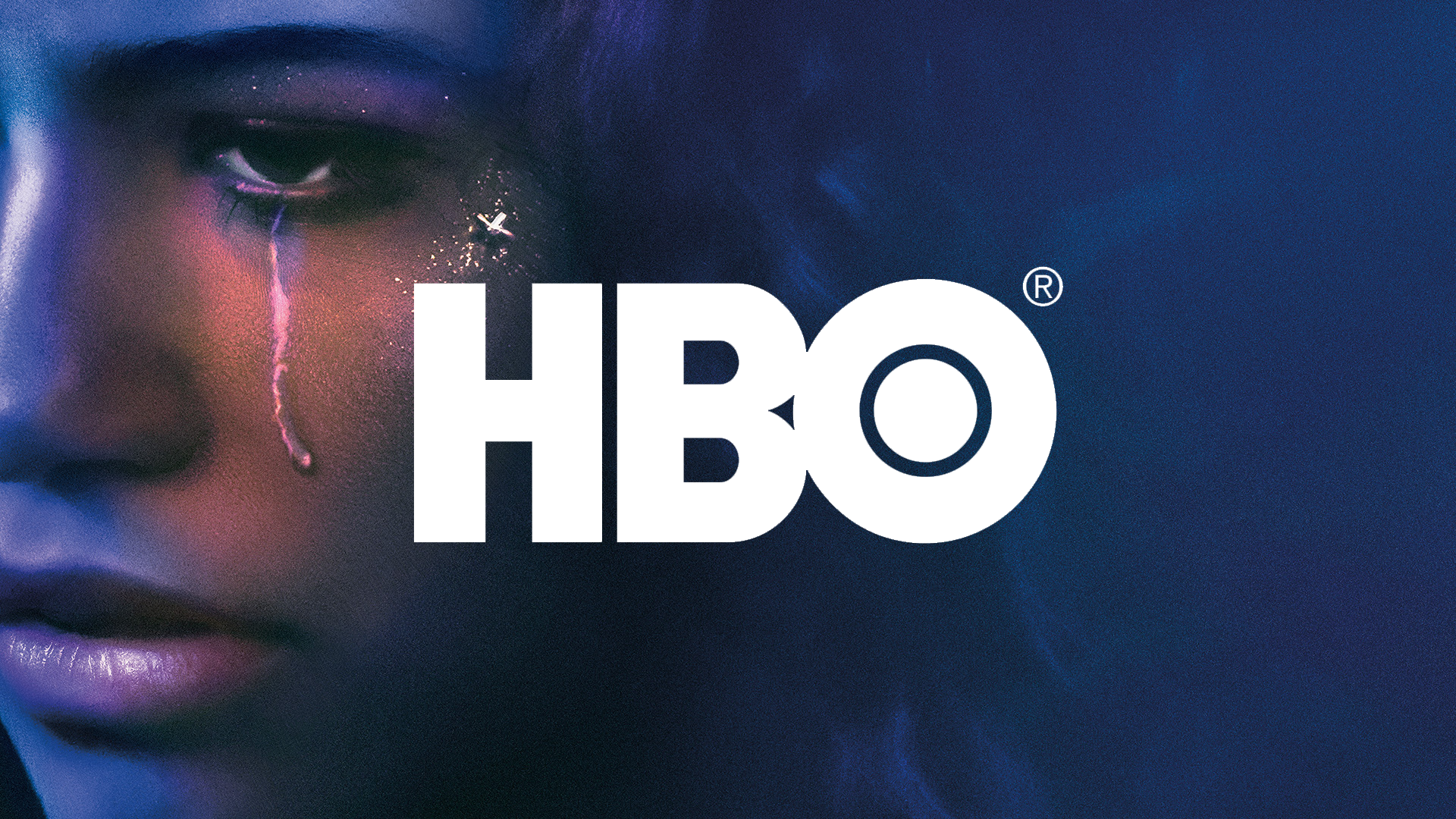
“You are serving up medicine to people. You should be responsible enough to give people directions on how to take that medicine.”
Chance Morrison has worked at HBO for 11 years, holding various positions and currently working in the department for Corporate Social Responsibility.
Chance is a passionate advocate for impactful cinema, serving on the board of Bowery Residents Committee as Junior Board Chairwoman, creating the Ask Chance foundation to provide young women exposure to industry professionals, and earning herself the prestigious Time Warner Richard D. Parsons Award for Community Service in 2017.
She works on impact campaigns for all HBO content, ranging from Sesame Street to Euphoria.
-
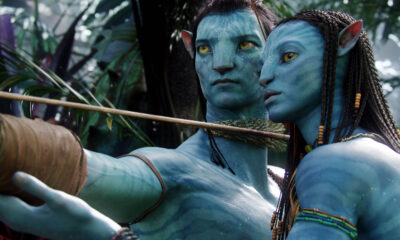
 SIE Magazine10 years ago
SIE Magazine10 years agoWhat Makes A Masterpiece and Blockbuster Work?
-

 Filmmakers10 years ago
Filmmakers10 years agoFilms That Changed The World: Philadelphia (1993)
-

 Companies7 years ago
Companies7 years agoSocial Impact Filmmaking: The How-To
-
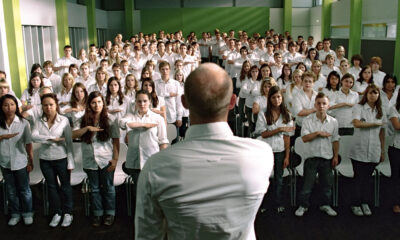
 SIE Magazine10 years ago
SIE Magazine10 years agoDie Welle and Lesson Plan: A Story Told Two Ways
-

 Academia9 years ago
Academia9 years agoFilmmaking Pitfalls in Deal-Making and Distribution
-
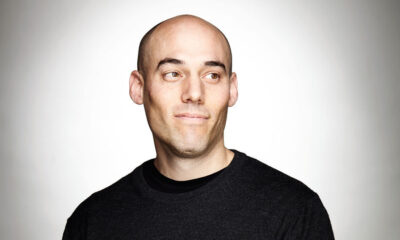
 Academia9 years ago
Academia9 years agoJoshua Oppenheimer: Why Filmmakers Shouldn’t Chase Impact
-

 Filmmakers10 years ago
Filmmakers10 years agoMirror Mirror: An Exploration of Self-Awareness in Recent Hollywood Films
-
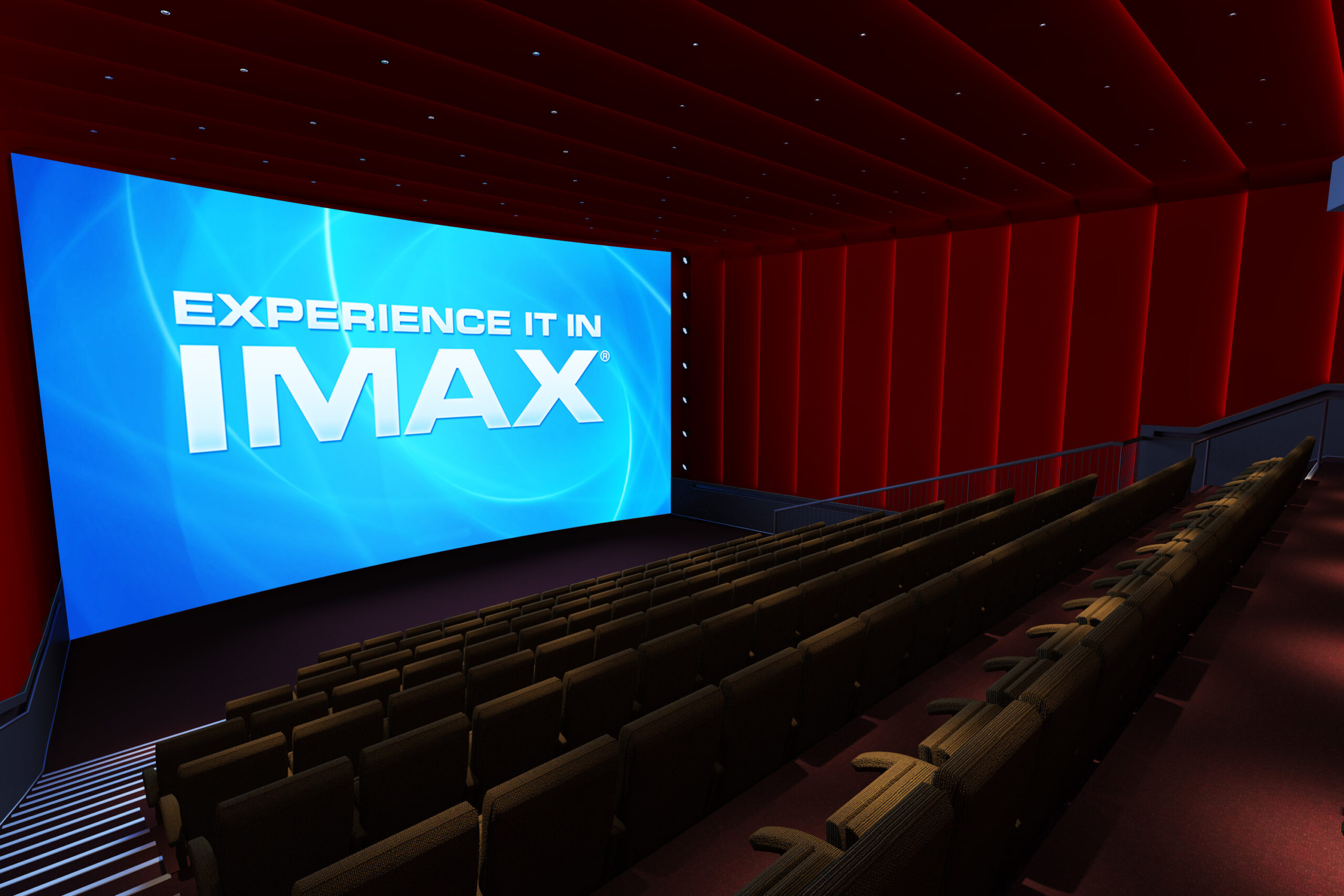
 Academia10 years ago
Academia10 years agoIMAX Documentaries: Exploring Our 7th Sense

